- Home
- Stephen King
Danse Macabre Page 7
Danse Macabre Read online
Page 7
I was delighted with the scene as written because it gave me a chance to combine Dracula-lore and E.C.-lore into one. My editor felt that it was, to put it frankly, out to lunch, and I was eventually persuaded to see it his way. Perhaps he was even right.5
I've tried here to delineate some of the differences between science fiction and horror, science fiction and fantasy, terror and horror, horror and revulsion, more by example than by definition. All of which is very well, but perhaps we ought to examine the emotion of horror a little more closely--not in terms of definition but in terms of effect. What does horror do? Why do people want to be horrified . . . why do they pay to be horrified? Why an Exorcist? A Jaws? An Alien?
But before we talk about why people crave the effect, maybe we ought to spend a little time thinking about components--and if we do not choose to define horror itself, we can at least examine the elements and perhaps draw some conclusions from them.
2
Horror movies and horror novels have always been popular, but every ten or twenty years they seem to enjoy a cycle of increased popularity and visibility. These periods almost always seem to coincide with periods of fairly serious economic and/or political strain, and the books and films seem to reflect those free-floating anxieties (for want of a better term) which accompany such serious but not mortal dislocations. They have done less well in periods when the American people have been faced with outright examples of horror in their own lives.
Horror went through a boom period in the 1930s. When people hard-pressed by the Depression weren't ponying up at the box office to see a hundred Busby Berkeley girls dancing to the tune of "We're in the Money," they were perhaps releasing their anxieties in another way--by watching Boris Karloff shamble across the moors in Frankenstein or Bela Lugosi creep through the dark with his cape up over his mouth in Dracula. The '30s also marked the rise of the so-called "Shudder Pulps," which encompassed everything from Weird Tales to Black Mask.
We find few horror movies or novels of note in the 1940s, and the one great magazine of fantasy which debuted in that decade, Unknown, did not survive for long. The great Universal Studios monsters of the Depression days--Frankenstein's monster, the Wolf Man, the Mummy, and the Count--were dying in that particularly messy and embarrassing way that the movies seem to reserve for the terminally ill; instead of being retired with honors and decently interred in the moldy soil of their European churchyards, Hollywood decided to play them for laughs, squeezing every last quarter and dime admission possible out of the poor old things before letting them go. Hence, Abbott & Costello met the monsters, as did the Bowery Boys, not to mention those lovable eye-boinkers and head-knockers, the Three Stooges. In the '40s, the monsters themselves became stooges. Years later, in another postwar period, Mel Brooks would give us his version of Abbott and Costello Meet Frankenstein, Young Frankenstein--starring Gene Wilder and Marty Feldman instead of Bud Abbott and Lou Costello.
The eclipse of horror in fiction that began in 1939 lasted for twenty-five years. Oh, an occasional novel such as Richard Matheson's Shrinking Man or William Sloane's Edge of Running Water would pop up, reminding us that the genre was still there (although even Matheson's grim man-against-giant-spider tale, a horror story if there ever was one, was touted as science fiction), but the idea of a best-selling horror novel would have been laughed out of court along Publisher's Row.
As with the movies, the golden age of weird fiction had passed in the '30s, when Weird Tales was at the peak of its influence and quality (not to mention its circulation), publishing the fiction of Clark Ashton Smith, the young Robert Bloch, Dr. David H. Keller, and, of course, the twentieth-century horror story's dark and baroque prince, H. P. Lovecraft. I will not offend those who have followed weird fiction over a span of fifty years by suggesting that horror disappeared in the 1940s; indeed it did not. Arkham House had then been founded by the late August Derleth, and Arkham published what I regard as its most important works in the period 1939-1960--works including Lovecraft's The Outsider and Beyond the Wall of Sleep, Henry S. Whitehead's Jumbee, The Opener of the Way and Pleasant Dreams, by Robert Bloch . . . and Ray Bradbury's Dark Carnival, a marvelous and terrifying collection of a darker world just beyond the threshold of this one.
But Lovecraft was dead before Pearl Harbor; Bradbury would turn his hand more and more often to his own lyric blend of science fiction and fantasy (and it was only after he did so that his work began to be accepted by such mainstream magazines as Collier's and the Saturday Evening Post); Robert Bloch had begun to write his suspense stories, using what he had learned in his first two decades as a writer to create a powerful series of offbeat novels, which are only surpassed by the novels of Cornell Woolrich.
During and after the war years, horror fiction was in decline. The age did not like it. It was a period of rapid scientific development and rationalism--they grow very well in a war atmosphere, thanks--and it became a period which is now thought of by fans and writers alike as "the golden age of science fiction." While Weird Tales plugged grimly along, holding its own but hardly reaping millions (it would fold in the midfifties after a downsizing from its original gaudy pulp size to a digest form failed to effect a cure for its ailing circulation), the sf market boomed, spawning a dozen well-remembered pulps and making names such as Heinlein, Asimov, Campbell, and Del Rey, if not household words, at least familiar and exciting to an ever-growing community of fans dedicated to the proposition of the rocket ship, the space station, and the ever-popular death ray.
So horror languished in the dungeon until 1955 or so, rattling its chains once in a while but causing no great stir. It was around that time that two men named Samuel Z. Arkoff and James H. Nicholson stumbled downstairs and discovered a money machine rusting away unnoticed in that particular dungeon. Originally film distributors, Arkoff and Nicholson decided that, since there was an acute shortage of B-pictures in the early fifties, they would make their own.
Insiders predicted speedy economic ruin for the entrepreneurs. They were told they were setting to sea in a lead sailboat; this was the age of TV. The insiders had seen the future and it belonged to Dagmar and Richard Diamond, Private Detective. The consensus among those who cared at all (and there weren't many) was that Arkoff and Nicholson would lose their shirts very quickly.
But during the twenty-five years that the company they formed, American-International Pictures, has been around (it's now Arkoff alone; James Nicholson died several years ago), it has been the only major American film company to show a consistent profit, year in and year out. AIP has made a great variety of films, but all of them have taken dead aim on the youth market; the company's pictures include such dubious classics as Boxcar Bertha, Bloody Mama, Dragstrip Girl, The Trip, Dillinger, and the immortal Beach Blanket Bingo. But their greatest success was with horror films.
What elements made these AIP films shlock classics? They were simple, shot in a hurry, and so amateurish that one can sometimes see the shadow of a boom mike in the shot or catch the gleam of an air tank inside the monster suit of an underwater creature (as in The Attack of the Giant Leeches). Arkoff himself recalls that they rarely began with a completed script or even a coherent screen treatment; often money was committed to projects on the basis of a title that sounded commercial, such as Terror from the Year 5000 or The Brain Eaters, something that would make an eye-catching poster.
Whatever the elements were, they worked.
3
Well, let all that go for the moment. Let's talk monsters.
Exactly what is a monster?
Begin by assuming that the tale of horror, no matter how primitive, is allegorical by its very nature; that it is symbolic. Assume that it is talking to us, like a patient on a psychoanalyst's couch, about one thing while it means another. I am not saying that horror is consciously allegorical or symbolic; that is to suggest an artfulness that few writers of horror fiction or directors of horror films aspire to. There has recently been a retrospective of AIP movies in New Y
ork (1979), and the idea of a retrospective suggests art, but at most they are trash art. The pictures have great nostalgia value, but those searching for culture may look elsewhere. To suggest that Roger Corman was unconsciously creating art while on a four-day shooting schedule and a budget of $10,000 is to suggest the absurd.
The element of allegory is there only because it is built-in, a given, impossible to escape. Horror appeals to us because it says, in a symbolic way, things we would be afraid to say right out straight, with the bark still on; it offers us a chance to exercise (that's right; not exorcise but exercise) emotions which society demands we keep closely in hand. The horror film is an invitation to indulge in deviant, antisocial behavior by proxy--to commit gratuitous acts of violence, indulge our puerile dreams of power, to give in to our most craven fears. Perhaps more than anything else, the horror story or horror movie says it's okay to join the mob, to become the total tribal being, to destroy the outsider. It has never been done better or more literally than in Shirley Jackson's short story "The Lottery," where the entire concept of the outsider is symbolic, created by nothing more than a black circle colored on a slip of paper. But there is no symbolism in the rain of stones which ends the story; the victim's own child pitches in as the mother dies, screaming "It's not fair! It's not fair!"
Nor is it an accident that the horror story ends so often with an O. Henry twist that leads straight down a mine shaft. When we turn to the creepy movie or the crawly book, we are not wearing our "Everything works out for the best" hats. We're waiting to be told what we so often suspect--that everything is turning to shit. In most cases the horror story provides ample proof that such is indeed the case, and I don't believe, when Katharine Ross falls prey to the Stepford Men's Association at the conclusion of The Stepford Wives or when the heroic black man is shot dead by the numbnuts sheriff's posse at the end of Night of the Living Dead, that anyone is really surprised. It is, as they say, a part of the game.
And monstrosity? What about that part of the game? What sort of handle can we get on that? If we don't define, can we at least exemplify? Here is a fairly explosive package, my friends.
What about the freaks in the circus? The carny aberrations observed by the light of naked hundred-watt bulbs? What about Cheng and Eng, the famous Siamese twins? A majority of people considered them monstrous in their day, and an even greater number no doubt considered the fact that each had his own married life even more monstrous. America's most mordant--and sometimes funniest--cartoonist, a fellow named Rodrigues, has rung the changes on the Siamese-twin theme in his Aesop Brothers strip in the National Lampoon, where we have our noses rubbed in almost every possible bizarre exingency of life among the mortally attached: the sex lives of, the bathroom functions of, the love lives, the sicknesses. Rodrigues provides everything you ever wondered about in regard to Siamese twins . . . and fulfills your darkest surmises. To say that all of this is in poor taste may be true, but it's still a futile and impotent criticism--the old National Enquirer used to run pictures of car-wreck victims in pieces and dogs munching happily away at severed human heads, but it did a land-office business in grue before lapsing back into a quieter current of the American mainstream.6
What about the other carny freaks? Are they classifiable as monstrosities? Dwarfs? Midgets? The bearded lady? The fat lady? The human skeleton? At one time or another most of us have been there, standing on the beaten, sawdust-strewn dirt with a chili dog or a paper of sweet cotton candy in one hand while the barker hucksters us, usually with one sample of these human offshoots standing nearby as a specimen--the fat lady in her pink little girl's tutu, the tattooed man with the tail of a dragon curled around his burly neck like a fabulous hangman's noose, or the man who eats nails and scrap metal and light bulbs. Perhaps not so many of us have surrendered to the urge to cough up the two bits or four bits or six bits to go inside and see them, plus such all-time favorites as The Two-Headed Cow or The Baby in a Bottle (I have been writing horror stories since I was eight, but have never yet attended a freak show), but most of us have surely felt the impulse. And at some carnivals, the most terrible freak of all is kept out back, kept in darkness like some damned thing from Dante's Ninth Circle of Hell, kept there because his performance was forbidden by law as long ago as 1910, kept in a pit and dressed in a rag. This is the geek, and for an extra buck or two you could stand at the edge of his pit and watch him bite off the head of a live chicken and then swallow it even as the decapitated bird fluttered in his hands.
There is something so attractive about freaks, yet something so forbidden and appalling, that the one serious effort to use them as the mainspring of a horror picture resulted in the film's quick shelving. The picture was Freaks, a Tod Browning film made in 1932 for MGM.
Freaks is the story of Cleopatra, the beautiful acrobat who marries a midget. In the best E.C. tradition (an E.C. that was almost twenty years unborn in 1932), she has a heart as black as midnight in a coal mine. It's not the midget she's interested in, it's his money. Like the mate-eating human trapdoor spiders of those comic-book stories yet to come, Cleo soon takes up with another man; in this case it's Hercules, the show's strongman. Like Cleopatra herself, Hercules is at least nominally okay, although it is with the freaks that our sympathies lie. These two heels begin a systematic poisoning program on Cleo's tiny husband. The other freaks discover what is going on and take an almost unspeakable revenge on the pair. Hercules is killed (there is a rumor that, as Browning originally conceived the film, the strongman was to be castrated) and the beautiful Cleopatra is turned into a bird-woman, feathered and legless.
Browning made the mistake of using real freaks in his film. We may only feel really comfortable with horror as long as we can see the zipper running up the monster's back, when we understand that we are not playing for keepsies. The climax of Freaks, as the Living Torso and the Armless Wonder and the Hilton Sisters--Siamese twins--among others, slither and flop through the mud after the screaming Cleopatra, was simply too much. Even some of MGM's tame exhibitors flatly refused to show it, and Carlos Clarens reports in his Illustrated History of the Horror Film (Capricorn Books: 1968) that at its one preview in San Diego "a woman ran screaming up the aisle." The film was exhibited--after a fashion--in a version so radically cut that one film critic complained that he had no idea what he was watching. Clarens further reports that the film was banned for thirty years in the U.K., the country that has brought us, among other things, Johnny Rotten, Sid Vicious, the Snivelling Shits, and the charming custom of "Paki-bashing."
Freaks is now sometimes exhibited on PTV stations and may at this writing have finally become available on videocassettes. But to this day it remains a source of heated discussion, comment, and conjecture among horror fans--and although many have heard of it, surprisingly few have actually seen it.
4
Leaving freaks entirely out of it for the moment, what else do we consider horrible enough to label with what surely must be the world's oldest perjorative? Well, there were all those bizarre Dick Tracy villains, perhaps best epitomized by Fly-face, and there was the archenemy of Don Winslow, The Scorpion, whose face was so horrible that he had to keep it constantly covered (although he would sometimes unveil it to minions who had failed him in some way--said minions would immediately drop dead of heart attacks, literally scared to death). So far as I know, the horrible secret of The Scorpion's physiognomy was never uncovered (pardon the pun, heh-heh), but the intrepid Commander Winslow did once succeed in unmasking The Scorpion's daughter, who had the slack, dead face of a corpse. This information was delivered to the breathless reader in italics--the slack, dead face of a corpse!--for added emphasis.
Perhaps the "new generation" of comic monsters is best epitomized by those created by Stan Lee's Marvel Comics, where for every superhero such as Spider-Man or Captain America, there seem to be a dozen freakish aberrations: Dr. Octopus (known to children all over the comic-reading world as Doc Ock), whose arms have been augmented by what appear t
o be a waving forest of homicidal vacuum-cleaner attachments; The Sandman, who is a sort of walking sand dune; The Vulture; Stegron; The Lizard; and most ominous of all, Dr. Doom, whose appearance has been so badly maimed in his Twisted Pursuit of Forbidden Science that he now resembles a great, clanking cyborg who wears a green cape, peers through eyeholes like the archers' slits in a medieval castle, and who appears to be literally sweating rivets. Superheroes with elements of monstrosity in their makeup seem less enduring. My own favorite, Plastic Man (always accompanied by his wonderfully screwball sidekick, Woozy Winks), just never made it. Reed Richards of the Fantastic Four is a Plastic Man lookalike, and his cohort Ben Grimm (aka The Thing) looks like a hardened lava flow, but they are among the few exceptions to the rule.
So far, we've talked about carny freaks and the caricatures we sometimes find in the funnies, but let's come a trifle closer to home. You might ask yourself what you consider monstrous or horrible in daily life--you're exempted from this if you're a doctor or a nurse; these people see all the aberrations they can handle, and much the same can be said for policemen and bartenders.
But as for the rest of us?
Take fat. How fat does a person have to be before he or she passes over the line and into a perversion of the human form severe enough to be called monstrosity? Surely it is not the woman who shops Lane Bryant or the fellow who buys his suits in that section of the menswear store reserved for the "husky build"--or is it? Has the obese person reached the point of monstrosity when he or she can no longer go to the movies or to a concert because his/her buttocks will no longer fit between the fixed armrests of a single seat?

 The Stand
The Stand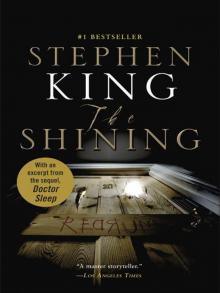 The Shining
The Shining It
It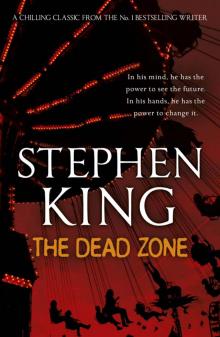 The Dead Zone
The Dead Zone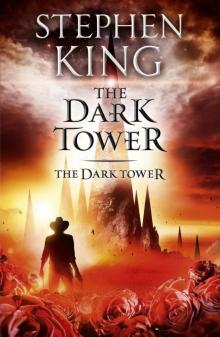 The Dark Tower
The Dark Tower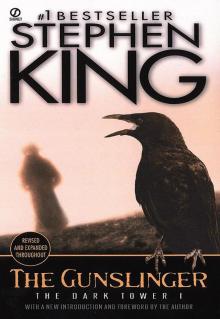 The Gunslinger
The Gunslinger Song of Susannah
Song of Susannah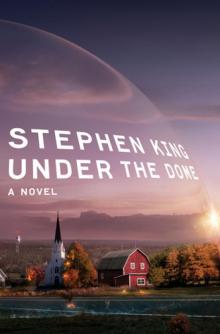 Under the Dome
Under the Dome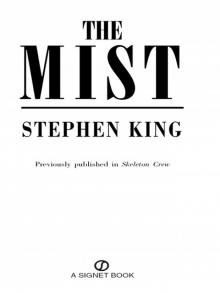 The Mist
The Mist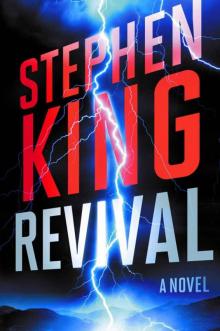 Revival
Revival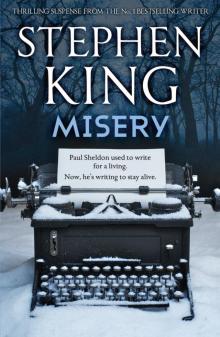 Misery
Misery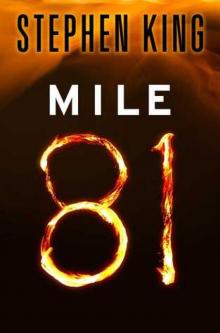 Mile 81
Mile 81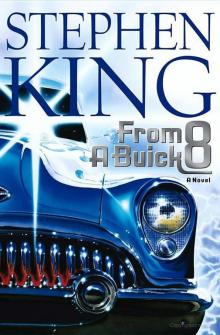 From a Buick 8
From a Buick 8 Just After Sunset
Just After Sunset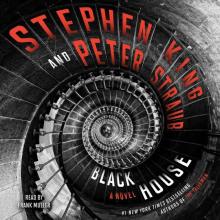 Black House
Black House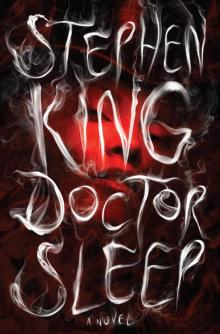 Doctor Sleep
Doctor Sleep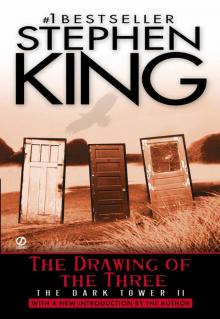 The Drawing of the Three
The Drawing of the Three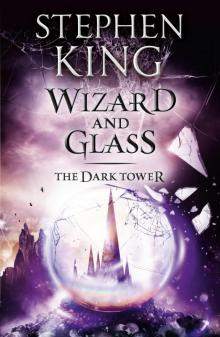 Wizard and Glass
Wizard and Glass Dolores Claiborne
Dolores Claiborne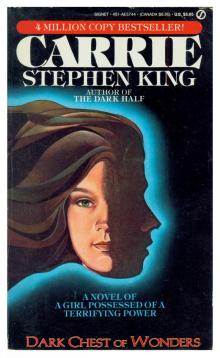 Carrie
Carrie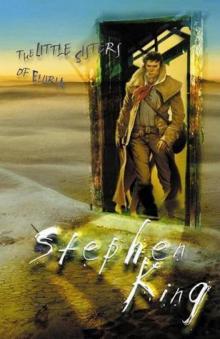 The Little Sisters of Eluria
The Little Sisters of Eluria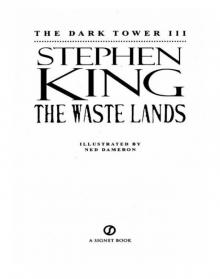 The Waste Lands
The Waste Lands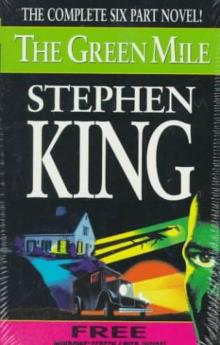 The Green Mile
The Green Mile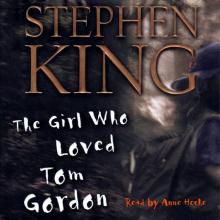 The Girl Who Loved Tom Gordon
The Girl Who Loved Tom Gordon Cujo
Cujo The Outsider_A Novel
The Outsider_A Novel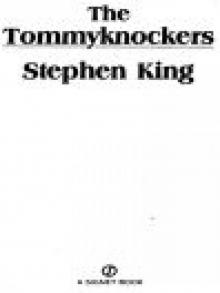 The Tommyknockers
The Tommyknockers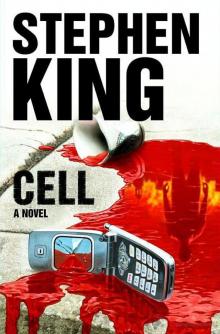 Cell
Cell Pet Sematary
Pet Sematary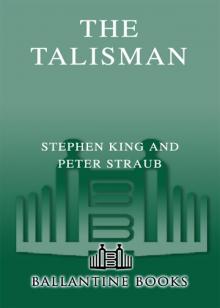 The Talisman
The Talisman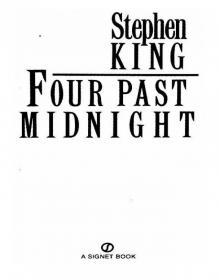 Four Past Midnight
Four Past Midnight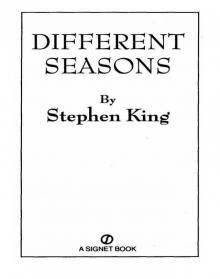 Different Seasons
Different Seasons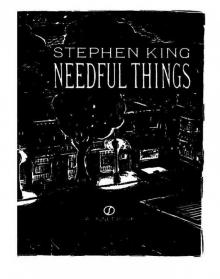 Needful Things
Needful Things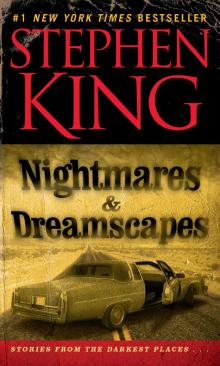 Nightmares and Dreamscapes
Nightmares and Dreamscapes Christine
Christine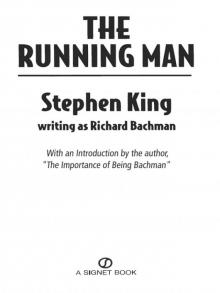 The Running Man
The Running Man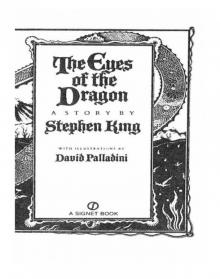 The Eyes of the Dragon
The Eyes of the Dragon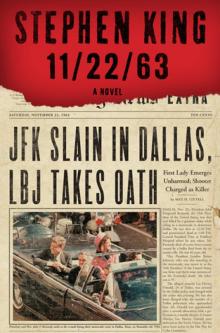 11/22/63
11/22/63 Firestarter
Firestarter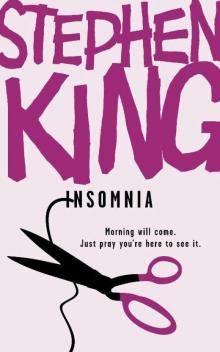 Insomnia
Insomnia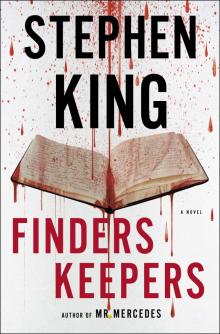 Finders Keepers
Finders Keepers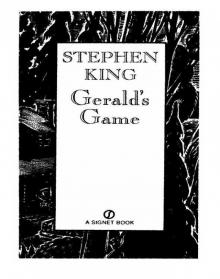 Gerald's Game
Gerald's Game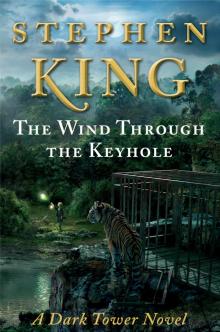 The Wind Through the Keyhole
The Wind Through the Keyhole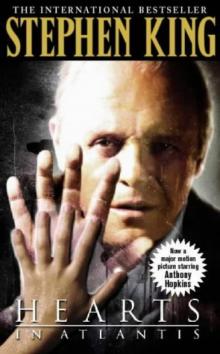 Hearts in Atlantis
Hearts in Atlantis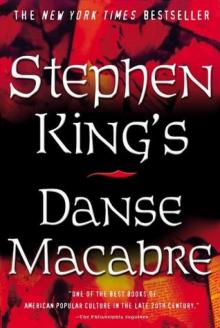 Danse Macabre
Danse Macabre Thinner
Thinner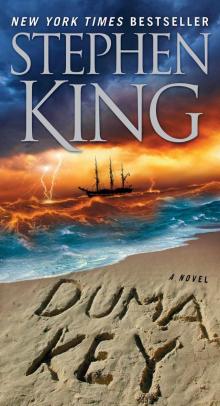 Duma Key
Duma Key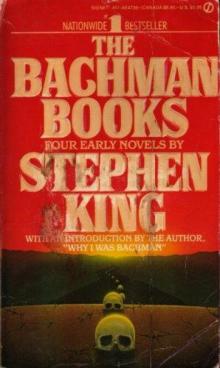 The Bachman Books
The Bachman Books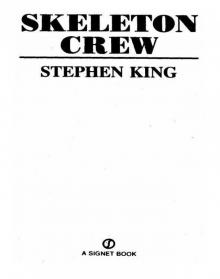 Skeleton Crew
Skeleton Crew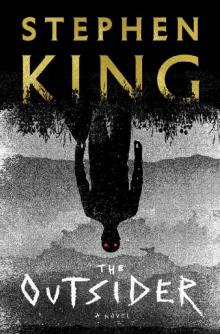 The Outsider-Stephen King
The Outsider-Stephen King Full Dark, No Stars
Full Dark, No Stars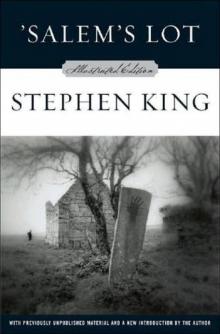 Salem's Lot
Salem's Lot Bag of Bones
Bag of Bones Desperation
Desperation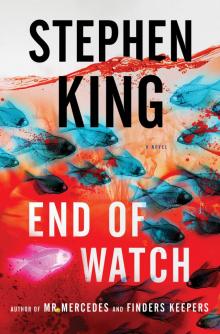 End of Watch
End of Watch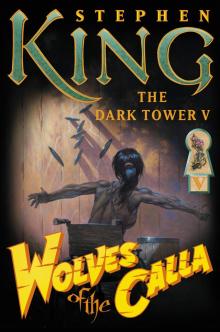 Wolves of the Calla
Wolves of the Calla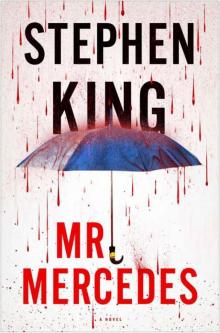 Mr. Mercedes
Mr. Mercedes Billy Summers
Billy Summers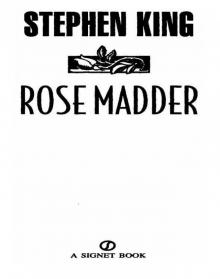 Rose Madder
Rose Madder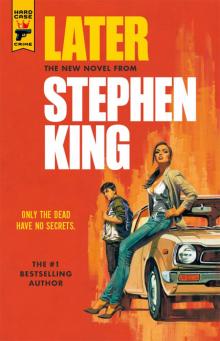 Later
Later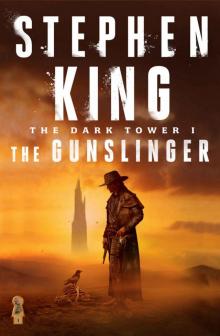 Gunslinger
Gunslinger The Langoliers
The Langoliers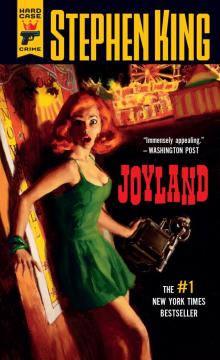 Joyland
Joyland If It Bleeds
If It Bleeds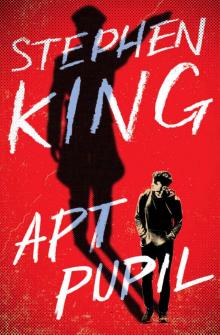 Apt Pupil (Scribner Edition)
Apt Pupil (Scribner Edition) Flight or Fright
Flight or Fright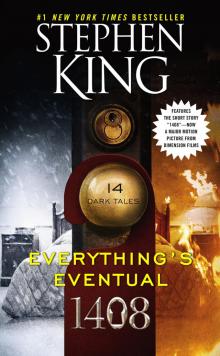 Everything's Eventual: 14 Dark Tales
Everything's Eventual: 14 Dark Tales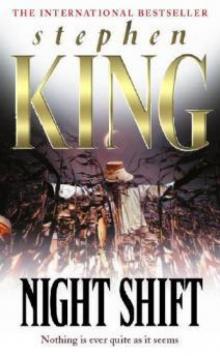 Night Shift
Night Shift The Dark Half
The Dark Half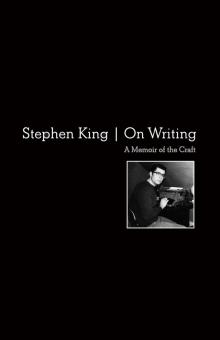 On Writing
On Writing The Institute
The Institute A Death
A Death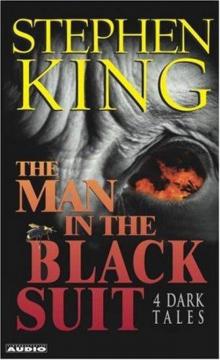 The Man in the Black Suit : 4 Dark Tales
The Man in the Black Suit : 4 Dark Tales Bullet
Bullet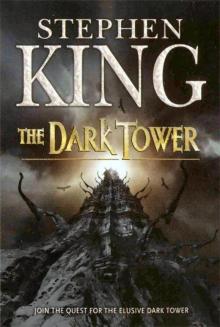 The Dark Tower tdt-7
The Dark Tower tdt-7 Chiral Mad 3
Chiral Mad 3 Big Driver
Big Driver Stephen King: The Green Mile
Stephen King: The Green Mile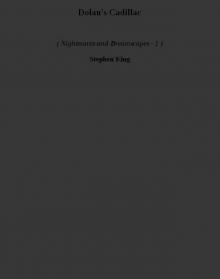 Dolan's Cadillac nad-1
Dolan's Cadillac nad-1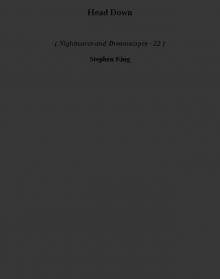 Head Down nad-22
Head Down nad-22 The Doctor's Case
The Doctor's Case Luckey Quarter
Luckey Quarter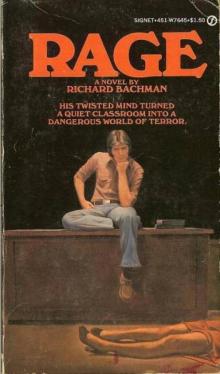 Rage (richard bachman)
Rage (richard bachman)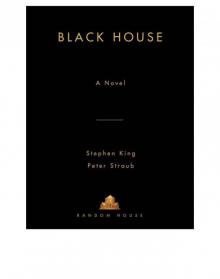 Black House js-2
Black House js-2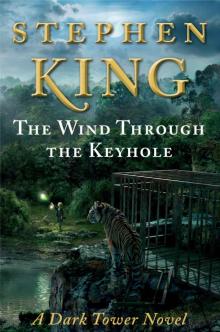 The Wind Through the Keyhole (Dark Tower)
The Wind Through the Keyhole (Dark Tower)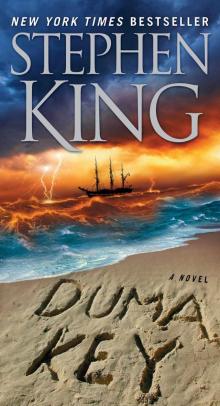 Duma Key: A Novel
Duma Key: A Novel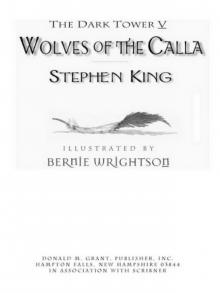 Dark Tower V, The
Dark Tower V, The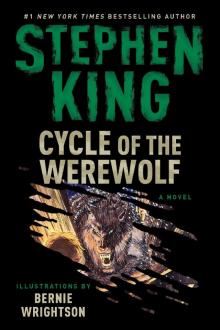 Cycle of the Werewolf
Cycle of the Werewolf AUTOPSY ROOM FOUR
AUTOPSY ROOM FOUR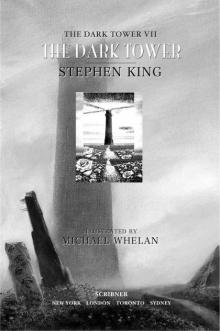 Dark Tower VII, The (v. 7)
Dark Tower VII, The (v. 7) Gramma
Gramma Suffer the Little Children
Suffer the Little Children Chinga
Chinga Word Processor of the Gods
Word Processor of the Gods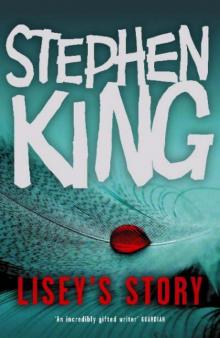 Lisey’sStory
Lisey’sStory Dark Tower V (Prologue)
Dark Tower V (Prologue)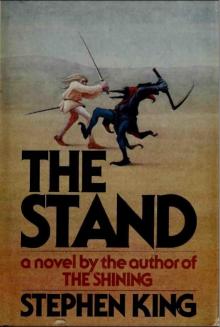 The Stand (Original Edition)
The Stand (Original Edition) Rainy Season nad-13
Rainy Season nad-13 Transgressions
Transgressions The Plant
The Plant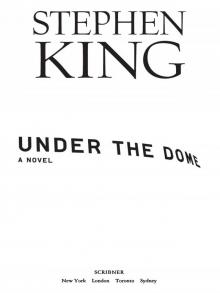 Under the Dome: A Novel
Under the Dome: A Novel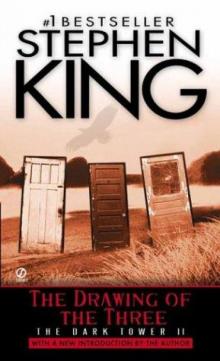 The Dark Tower II: The Drawing of the Three
The Dark Tower II: The Drawing of the Three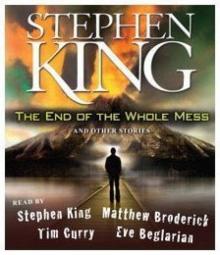 The End of the Whole Mess:
The End of the Whole Mess: Ur
Ur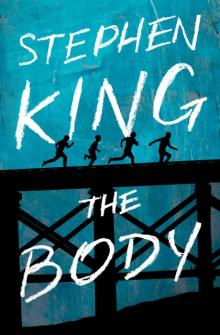 The Body
The Body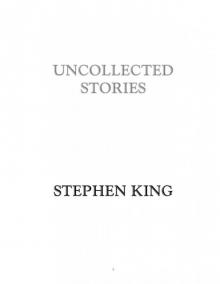 Uncollected Stories 2003
Uncollected Stories 2003 Chattery Teeth
Chattery Teeth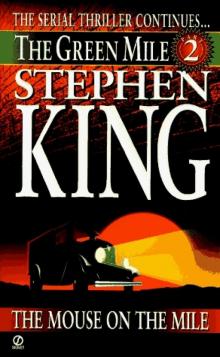 The Mouse on the Mile
The Mouse on the Mile The Cat from Hell
The Cat from Hell![The Drawing of the Three [The Dark Tower II] Read online](http://i1.bookreadfree.com/i/03/25/the_drawing_of_the_three_the_dark_tower_ii_preview.jpg) The Drawing of the Three [The Dark Tower II]
The Drawing of the Three [The Dark Tower II] Cell: A Novel
Cell: A Novel Uncle Otto's Truck
Uncle Otto's Truck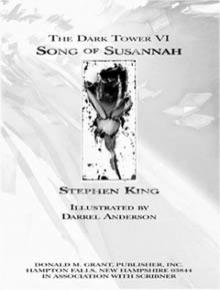 Song of Susannah dt-6
Song of Susannah dt-6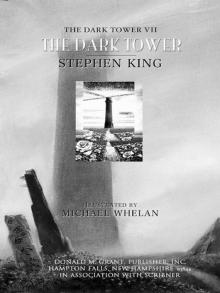 The Dark Tower VII
The Dark Tower VII Head Down
Head Down Sneakers
Sneakers Crouch End
Crouch End Outsider
Outsider End of Watch: A Novel (The Bill Hodges Trilogy Book 3)
End of Watch: A Novel (The Bill Hodges Trilogy Book 3) Revival: A Novel
Revival: A Novel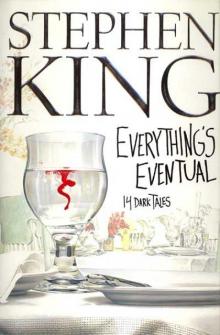 Everything's Eventual skssc-4
Everything's Eventual skssc-4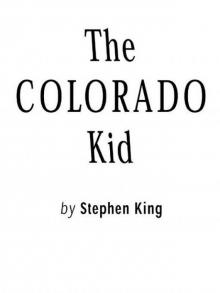 The Colorado Kid
The Colorado Kid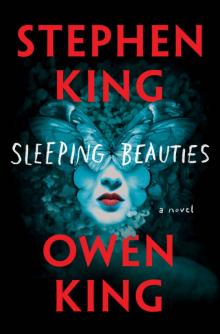 Sleeping Beauties: A Novel
Sleeping Beauties: A Novel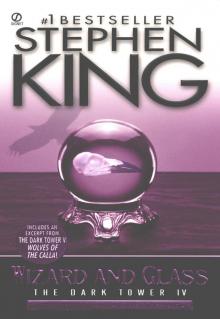 The Dark Tower IV Wizard and Glass
The Dark Tower IV Wizard and Glass A Book of Horrors
A Book of Horrors Four Past Midnight - 3 - Secret Window, Secret Garden
Four Past Midnight - 3 - Secret Window, Secret Garden The House on Maple Street
The House on Maple Street Sometimes They Come Back
Sometimes They Come Back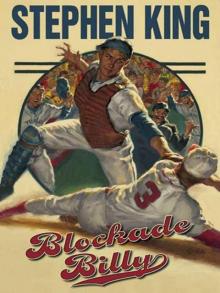 Blockade Billy
Blockade Billy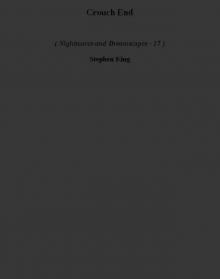 Crouch End nad-17
Crouch End nad-17 Lunch at the Gotham Cafe
Lunch at the Gotham Cafe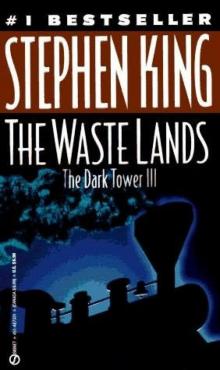 The Waste Lands dt-3
The Waste Lands dt-3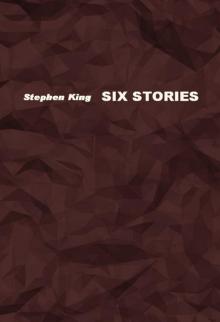 Six Stories
Six Stories A Face in the Crowd
A Face in the Crowd Case
Case Four Past Midnight - 2 - The Langoliers
Four Past Midnight - 2 - The Langoliers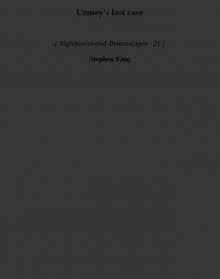 Umney's last case nad-21
Umney's last case nad-21 Survivor Type
Survivor Type Guns (Kindle Single)
Guns (Kindle Single) You Know They Got a Hell of a Band
You Know They Got a Hell of a Band The Jaunt
The Jaunt In A Half World Of Terror
In A Half World Of Terror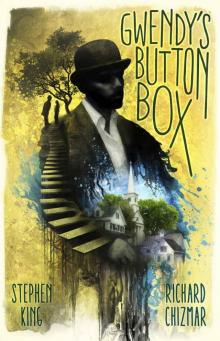 Gwendy's Button Box
Gwendy's Button Box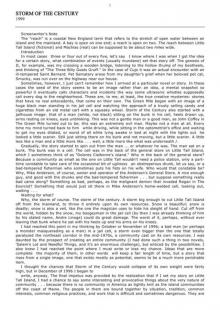 Storm of the Century
Storm of the Century The Jaunt. Travel
The Jaunt. Travel Roadwork
Roadwork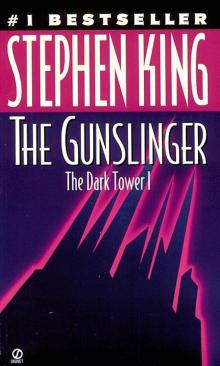 Darktower 1 - The Gunslinger
Darktower 1 - The Gunslinger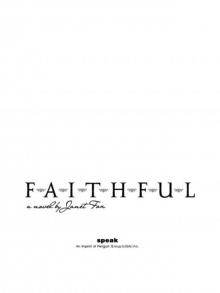 Faithful
Faithful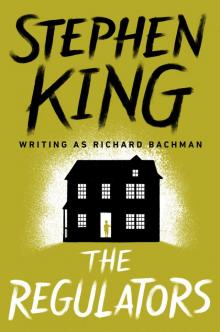 The Regulators
The Regulators A Bedroom in the Wee Hours of the Morning
A Bedroom in the Wee Hours of the Morning Graveyard Shift
Graveyard Shift The Monkey
The Monkey Children of the Corn
Children of the Corn The Reploids
The Reploids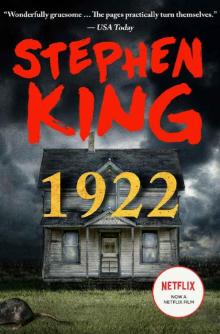 1922
1922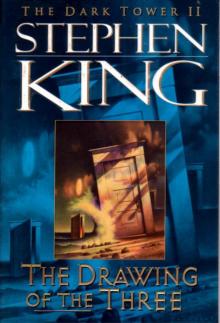 Darktower 2 - The Drawing of the Three
Darktower 2 - The Drawing of the Three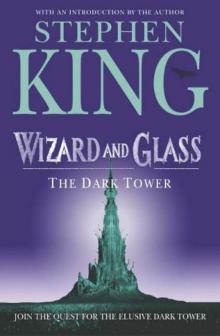 Wizard and Glass dt-4
Wizard and Glass dt-4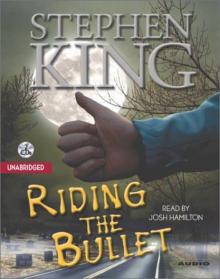 Riding The Bullet
Riding The Bullet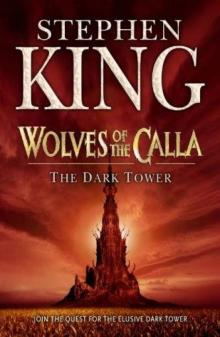 Wolves of the Calla dt-5
Wolves of the Calla dt-5 L.T.'S Theory Of Pets
L.T.'S Theory Of Pets The Langoliers fpm-1
The Langoliers fpm-1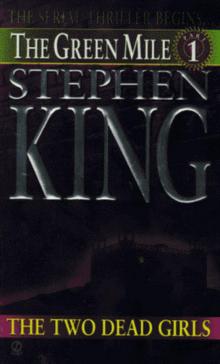 The Two Dead Girls
The Two Dead Girls The Blue Air Compressor
The Blue Air Compressor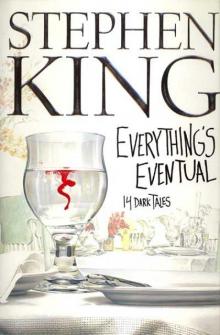 Everything's Eventual
Everything's Eventual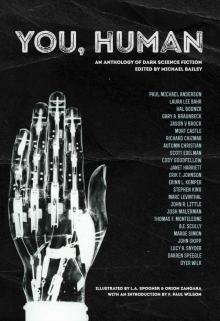 You, Human: An Anthology of Dark Science Fiction
You, Human: An Anthology of Dark Science Fiction The Night of The Tiger
The Night of The Tiger The Regulators (richard bachman)
The Regulators (richard bachman)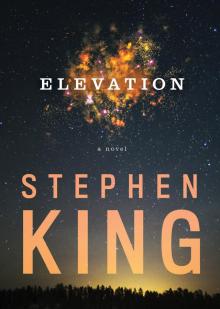 Elevation
Elevation The Road Virus Heads North
The Road Virus Heads North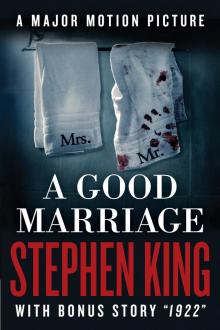 Good Marriage
Good Marriage Four Past Midnight - 5 - The Library Policeman
Four Past Midnight - 5 - The Library Policeman Grey Matter
Grey Matter Herman Wouk Is Still Alive
Herman Wouk Is Still Alive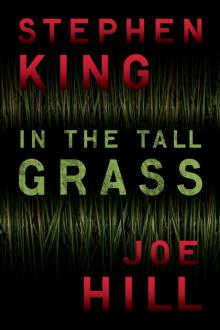 In the Tall Grass
In the Tall Grass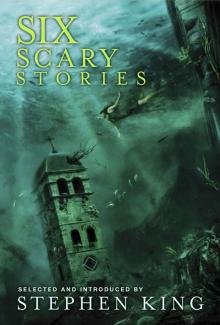 Six Scary Stories
Six Scary Stories Foreward
Foreward The Crate
The Crate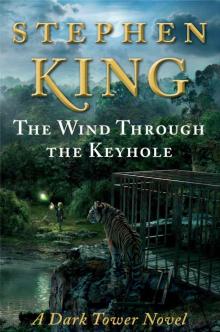 The wind through the keyhole adt-8
The wind through the keyhole adt-8 King, Stephen - Battleground
King, Stephen - Battleground The Wedding Gig
The Wedding Gig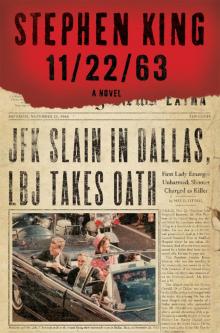 11/22/63: A Novel
11/22/63: A Novel The Long Walk
The Long Walk